
Julie Speed
I've heard inspiration described in many different ways over the years, but most have seemed forced or manufactured. Which, by its very nature, goes against the very concept of inspiration. I've often questioned where inspiration comes from, and how one know that they have been inspired. Do you realize it immediately or does it take reflection to understand? Chicago native and Texas resident Julie Speed has an interesting point of view on art and inspiration. The way she describes her work reminds me of a lock. As you slowly turn the tumblers of the lock, and the numbers begin to align, you hear a click as each falls into place. As Julie creates she hears a series of clicks, but I will let her describe the sensation.
Julie Speed is a self-taught artist who has been exhibiting her work since the mid-eighties. Her latest work focuses the complex struggle of man vs. nature and the various angles and directions in which to focus our attention. The consist shift in perception and the dark nature of her work is what draws the view in. The hidden imagery is what keeps them looking for hours.
Recently, Julie was kind enough to answer a few of our questions.

Orange Alert (OA): How would you describe your work?
Julie Speed (JS): I think that there is some kind of underlying math to the universe which is what sets off that little “click” in your head when you know you’ve hit a correct juxtaposition of color, line, form volume etc. So, in the long run, that’s what I’m aiming for…..feeling the pleasure of that “click” when you’ve hit the exactly perfect curve of one line resisting another – of hearing the click echoes when you catch the correct shape and heft of one color or line balanced against another etc… and it’s not found just in “Art”. You get the same visual sensual pleasure out of everyday tasks like cooking and gardening or even just lying around arranging sticks and rocks in the grass. There’s a lot of ways to get there. I used to start with a basic representational image in my head, sketch it out compositionally and start painting. Collage just naturally flows one piece to another. After experimenting with a series of abstract and semi-abstract collages I started seeing the images more as geometric shapes so lately I’ve been starting with a completely abstract drawing which evolves into a figurative painting (to which the viewer often attaches a story) so maybe we could label it “abstract-based realism” or “found narrative pararealism”. There are lots of labels to make up but I think the “isms” of art are probably more confusing than enlightening.
OA: What was it about the work of Francis Bacon that you found so inspirational?
JS: The fact that the work can be experienced on so many levels. First, it punches you in the gut, a visceral reaction. You get a funny feeling in your stomach when you spend time with it. (I get the same exact feeling looking at the totally abstract “Suprematist” work of Kasimir Malevich.) Then you go back to it and admire Bacon’s total mastery of his craft, the brushwork, color and composition. Then you can think about what story it tells. As a person I admire the fact that he didn’t run with the herd. In a time when all the art world was striving towards “cool”, he was totally not cool, not Pop, and not in it for fame or money. He knew what he needed to paint and went ahead and did it.

OA: I am fascinated by your Bible Studies Series. Can you talk a little about that series and the thought behind it? Did you discover anything about yourself or the bible during this process?
JS: Bible Studies series started with an1877 Gustav Dore Swedish bible with hundreds of illustrations that was destroyed in the 1993 Galveston, Texas flood, which washed out a friend’s bookstore. I bought it as scrap paper about 10 years ago and have been using it for collage ever since. In 2005, because of new technology in intaglio printmaking I’ve been able to incorporate collage into that work. This is really exciting for me and I’ve only just scratched the surface of what I want to learn.
I also learned things I didn’t know before about the Bible. For the collage elements of Women's Studies I glued together Bible illustrations depicting various women getting stoned (lots of that – women having caused all the bad behavior of their boyfriends) or the dogs tearing apart Jezebel's body ( she wasn’t so bad – her husband was clinically depressed and she was just trying to get him out of bed)...and in the text of “Women's Studies(Accounting)” (one of the re-fried etching/ collages) the text from Leviticus where it lays out how much women are worth - like if you kill one, what you have to pay her owner/husband/father vs. what you have to pay for a man you’ve injured... 50 shekels for a man and 30 for a woman. Of course it goes down if she's older. Leviticus is also where you find the words often cited by those people who think it’s not okay to be gay as evidence that God thinks so too. If that’s true then it's really bad news for children, who, according to Leviticus are worth even less than women. It also says that if you have a “skewed eye” or a broken arm or leg or "ye that hath ye stones broken" you can't come “nigh unto the Lord” either. Bad news for skiers and the wall-eyed.
The figures in "Ad Referendum" I glued together from over a dozen different Biblical sources and I can't remember them all - just a lot of book burnings, atrotcities and stonings all to do with holy wars of one sort or another.
The most fascinating thing I found was, because I was using and reading several different old bibles as text sources I noticed that in many places the translations were completely different from one bible to another. What was pure poetry in one translation was just ranting in another.

OA: Besides painting you also work with media boxes. Where do you find the material for these boxes? Is there a significance to working with antique paper and text? Does it add an instant history to a new piece?
JS: I’ve been collecting collage bits for years. Everywhere. Train tracks, flea markets, junk stores, yard sales, and the side of the road. I walk with my eyes down. Often used book dealers will sell me their leftovers, the books that are in pieces and/or too fire, child or flood damaged to put back together again. I like the mold and the stains. Quite often I incorporate it, then seal the work so it can’t spread.
The significance of the found paper is only that each scrap is unique in feel, smell and the quality of the paper. Paper before 1900 is generally better paper (though there are exceptions). I approach collage like a giant jig-saw puzzle, laying out dozens of boxes stuffed with thousands of pieces of paper, wood, metal etc. and I start playing. To make the game interesting I deny myself use of the scanner and computer. It keeps me from repeating myself with something easy but most of all, I like the feel, the texture and smell of the old paper. You can copy the image but never the feel and the smell.
OA: I read that you are working on a new book to be released in the fall of 2009. Is there a direction that that book might take? Have you begun to work on it?
JS: Oh yes, I’ve been working on it for 5 years. It starts where the last one left off. This one will be the work from 2003-2008.
OA: What's next for Julie Speed?
JS: I think it’s a lifetime quest looking for the “clicks”.

Bonus Questions:
OA: Coffee? If yes, what is your favorite type of coffee and where is your favorite coffee spot?
JS: Yes coffee. Really hot or really cold.
OA: Do you listen to music while you paint? Who are a few of your favorites?
JS: Bob Schneider, Terry Allen, Shawn Colvin
For more information on Julie Speed please visit her website.
+by+Nick+Volkert).jpg)
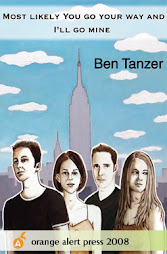

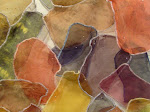









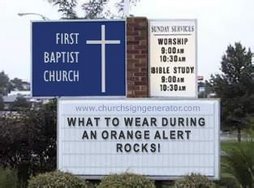


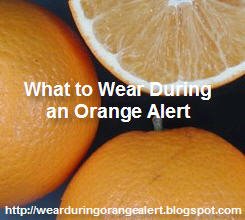


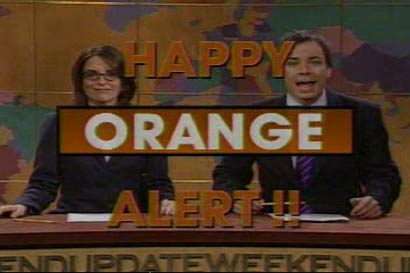


2 comments:
i enjoyed reading the interview.
wonderful artist!
r.
That was a great interview with Julie Speed.
I found another interview with her. I think you'd find interest in it.
Post a Comment